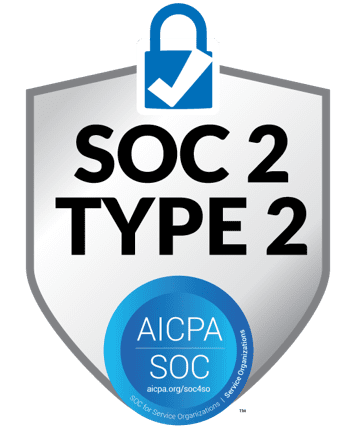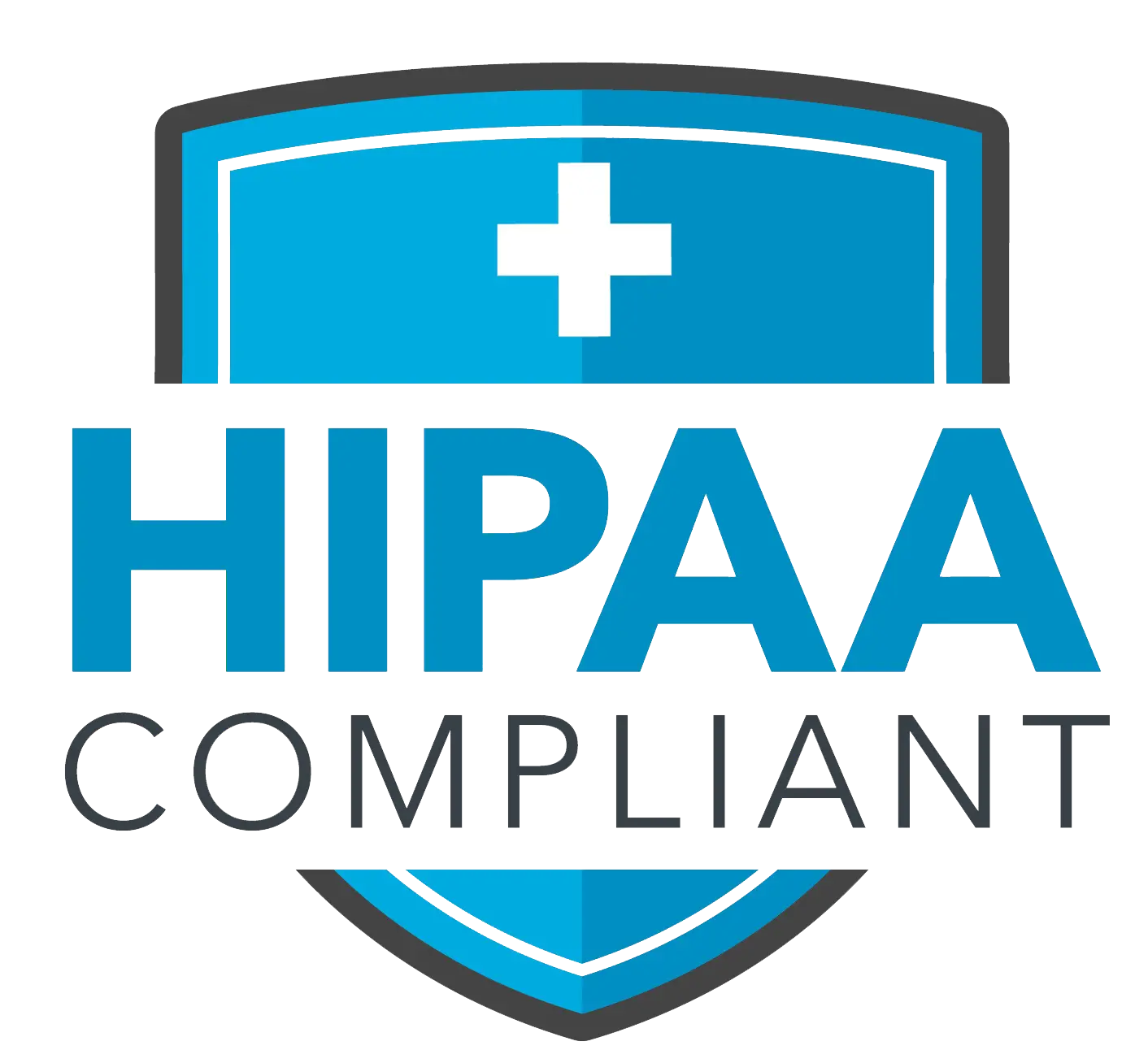When you use free AI tools, you might think you’re getting something for nothing. Your personal information, creative work, and business data often become permanent training material for AI models, giving companies valuable assets while exposing you to privacy and ownership risks.

Free AI platforms need to make money somehow, and your data becomes their product. Every prompt you enter, document you upload, or conversation you have gets collected and analyzed. Companies use this information to improve their AI systems, sell insights to third parties, or develop new features they can monetize later.
The risks go beyond simple data collection. You face potential exposure of sensitive information, loss of rights to your creative work, and legal complications if you handle client data improperly. Understanding these hidden costs helps you make better choices about which AI tools to trust with your information and when paying for premium services might actually save you money in the long run.
Understanding How Free AI Tools Use Your Data

Free AI tools collect vast amounts of user information to improve their systems and create new features. Every prompt you type trains their AI, turning your interactions into valuable training material for future versions.
What Counts as Data for AI Training
Your text inputs represent the most obvious data source for generative AI systems. This includes every question you ask, document you upload, and conversation you have with tools like ChatGPT or Microsoft Copilot.
Text-based data includes:
- Chat conversations and prompts
- Document uploads and file contents
- Email drafts and writing samples
- Code snippets and programming queries
Large language models also learn from your usage patterns. They track which responses you find helpful, how you edit their suggestions, and what follow-up questions you ask.
Your behavioral data reveals preferences and habits. AI systems note the time you use tools, topics you explore most, and features you access regularly.
Behavioral patterns captured:
- Session duration and frequency
- Feature usage statistics
- Response ratings and feedback
- Click-through patterns
Data Collection Practices and Terms of Service
Most free AI tools automatically collect your data unless you specifically opt out. These systems often collect large amounts of data, sometimes without people even realizing their data is being collected.
Terms of service documents outline data usage rights. These legal agreements typically grant companies broad permissions to use your content for training and improvement purposes.
Common terms include:
- Rights to analyze and process your inputs
- Permission to use data for model training
- Ability to create derivative works
- Data retention for extended periods
Many users skip reading these agreements. The language is often complex and buried in lengthy legal documents that obscure the actual data practices.
Privacy settings vary widely between platforms. Some AI technology providers offer granular controls, while others use blanket collection policies with limited user choice.
Examples of Popular Free AI Tools
ChatGPT operates under a freemium model where free users contribute training data. OpenAI uses conversations to improve their models, though paid subscribers can opt out of data training.
Microsoft Copilot integrates across Office applications and Windows systems. Your documents, emails, and search queries become part of their AI technology improvement process.
DeepSeek represents AI tools that trade your data for access. The platform offers powerful capabilities while using interactions to enhance their large language models.
Data usage varies by tool:
| Tool | Free Tier Data Use | Opt-out Available |
|---|---|---|
| ChatGPT | Training material | Paid plans only |
| Microsoft Copilot | Model improvement | Limited options |
| DeepSeek | Algorithm training | Check settings |
Google’s AI tools connect to your search history, Gmail content, and document activity. This integration creates detailed profiles of your interests and work patterns.
Many smaller AI platforms lack clear data policies. These tools may have less oversight and fewer privacy protections than major technology companies.
Data Exposure Risks When Using AI Tools

When you use AI tools, your data faces multiple exposure risks that most users never consider. These risks include direct leaks through poor security, data memorization by AI models, and sophisticated attacks that extract sensitive information.
Direct and Indirect Data Leaks
Your data can leak in obvious and hidden ways when using AI platforms. Public AI tools with unclear data policies often store your inputs to improve their models.
Direct leaks happen when platforms suffer security breaches. Recent research shows that 84% of AI tools experienced data breaches in workplace settings.
Indirect leaks are more dangerous because they’re harder to spot. Your data gets mixed into training datasets and can surface in responses to other users.
Common leak scenarios include:
- Login credentials stolen from AI platforms
- Sensitive documents uploaded to free tools
- Chat histories stored without encryption
- API keys exposed in prompts
Microsoft and other major providers have faced scrutiny over data handling practices. Even when companies promise privacy, your information might still flow to third-party processors.
Data Memorization in Large Language Models
Large language models like ChatGPT can memorize parts of their training data. This means your sensitive information could appear in responses to other users’ prompts.
Memorization happens when models encounter the same data multiple times during training. Personal details, code snippets, and business information get stored in model weights.
High-risk data types include:
- Email addresses and phone numbers
- Software code with proprietary logic
- Financial information and trade secrets
- Personal identification details
Generative AI tools struggle to “forget” memorized information completely. Even after updates, traces of your data might remain in model parameters.
Testing shows that models can reproduce training examples with surprising accuracy. Your confidential business strategy could become part of someone else’s AI response.
Vulnerabilities in Workplace and Embedded AI
Workplace AI creates unique exposure risks because employees often use these tools without proper oversight. Shadow AI adoption happens when workers choose their own AI tools.
Embedded AI features in everyday software multiply your exposure points. Microsoft Office, Google Workspace, and other platforms now include AI that processes your documents automatically.
Workplace exposure risks:
- No company policies for AI tool usage
- Employees sharing sensitive data unknowingly
- Embedded features enabled by default
- Cross-application data sharing
Many companies lack visibility into which AI tools their employees use. This creates gaps in data protection that hackers can exploit.
Recent surveys show 73% of enterprises experienced AI-related security incidents. The average cost reached $4.8 million per incident.
Prompt Injection and Model Extraction
Attackers can manipulate AI models to reveal training data or extract sensitive information through clever prompts. These attacks bypass normal security controls.
Prompt injection tricks models into ignoring safety instructions. Attackers craft special inputs that make AI tools leak confidential data or behave unexpectedly.
Model extraction involves stealing the model’s parameters or training data. Competitors might use these techniques to copy your custom AI implementations.
Attack methods include:
- Social engineering through conversational prompts
- Adversarial inputs that confuse model logic
- Repeated queries to extract memorized data
- Reverse engineering of model responses
DeepSeek and other open-source models face particular risks because their architectures are publicly known. Attackers can study these systems to find weaknesses.
Your custom prompts and fine-tuning data become targets for extraction attacks. Protecting against these requires specialized security measures that free tools rarely provide.
Your Intellectual Property and Creative Rights
When you use free AI tools, your creative work may become part of training data without your permission. AI companies face legal battles over copyright infringement as they use copyrighted materials to build their systems.
Ownership Disputes Over User-Generated Content
Many free AI platforms claim broad rights to your content through their terms of service. When you upload text, images, or other creative work, some companies retain licenses to use your material indefinitely.
Common ownership issues include:
- Unclear licensing terms for user uploads
- Automatic content rights transfers
- Shared ownership of AI-generated outputs
OpenAI and Microsoft have faced scrutiny over their data collection practices. Your original writing could end up training future AI models without compensation.
Some paid AI services explicitly avoid training on user data to address these concerns. They promise not to claim ownership of your creations.
The legal landscape remains unsettled. Courts are still deciding who owns content when AI tools help create it.
Copyright Implications for AI Training
Big Tech companies train AI models on copyrighted materials without compensating creators. This practice raises serious legal questions about fair use and creator rights.
Your copyrighted work might be scraped from websites to train AI systems. The models learn patterns from your content and can reproduce similar styles or ideas.
Key copyright concerns:
- Unauthorized use of creative works
- No compensation for original creators
- AI systems reproducing copyrighted elements
Courts and legislators grapple with whether AI developers face liability for using copyrighted training data. The legal precedents set today will shape AI development for years.
DeepSeek and other international AI companies add complexity to copyright enforcement across borders.
Creative Value Extraction by AI Companies
Free AI tools extract economic value from your creative work without sharing profits. Your original content becomes part of valuable AI training datasets that generate billions in revenue.
The real cost isn’t measured in dollars but in potential risk to intellectual property. Your creative labor subsidizes AI development while you receive no compensation.
How companies extract value:
- Using your content for commercial AI training
- Building profitable services from unpaid user contributions
- Licensing AI capabilities trained on your work
Professional creators face particular risks. Your unique style or expertise could be replicated by AI systems trained on your portfolio.
Creators can implement access restrictions and metadata to protect their work from AI scraping. These technical measures help enforce intellectual property rights.
The Business Impact of Unintended Data Sharing
Companies face significant financial and security risks when employees use free AI tools that collect training data. Your business data can flow to AI companies without your knowledge, creating legal liabilities and competitive disadvantages.
Sensitive Corporate Information Risks
When your employees use ChatGPT or Microsoft Copilot for work tasks, they often share confidential information without realizing it. AI agents can access systems they weren’t supposed to and enable sensitive data downloads.
Recent surveys show alarming patterns. 39% of companies reported AI agents accessed unauthorized systems. Another 33% found their AI tools accessed inappropriate data.
Your proprietary business strategies, customer lists, and financial information can become training material for competitors. Once this data enters an AI system, you lose control over how it’s used or shared.
Legal departments now face new compliance challenges. Client communications, merger discussions, and trade secrets may violate confidentiality agreements when shared with AI platforms.
Invisible Data Flows in Everyday AI Tools
Your team members copy-paste emails, reports, and presentations into AI tools daily. These interactions create hidden data streams that feed back into the AI company’s training systems.
Microsoft Copilot integrated into Office 365 processes your documents automatically. While marketed as secure, the data processing agreements often allow training use under certain conditions.
OpenAI’s business model depends on continuous data collection. Even when companies think they’re using “secure” versions, data often flows through shared infrastructure.
Common invisible data collection points include:
- Email content analysis
- Document suggestions and edits
- Meeting transcriptions
- Code repositories and comments
Your IT department may not know which tools collect training data. Many AI services change their terms of service regularly, expanding data use rights without clear notification.
Policy Changes and Transparency Challenges
AI companies frequently update their terms without clear notice, while data transparency faces technical challenges that affect how your information gets used. Legal frameworks struggle to keep pace with rapidly evolving AI technologies.
Stealthy Updates to Privacy Terms
Companies often change their privacy policies with minimal notification. You might receive a brief email or see a small banner notification about “updated terms.”
These changes can dramatically alter how your data gets used. A tool that previously kept your inputs private might suddenly gain rights to use them for training.
Microsoft has faced scrutiny for policy updates across its AI services. The company’s integration of AI into existing products means privacy changes can affect millions of users instantly.
OpenAI has modified its data usage policies multiple times since launching ChatGPT. Early users found their conversation data being used differently than originally stated.
Many updates happen during busy periods when users are less likely to notice. Companies time these announcements strategically to minimize attention.
The legal language in these updates is often complex. Most users cannot understand what rights they are giving up or how their data will be processed.
Legal and Regulatory Uncertainties
Current laws were not designed for modern AI technology. Governing AI presents diverse challenges as digital platform firms set their own rules for data and algorithm use.
Regulators struggle to understand how AI systems actually work. This knowledge gap makes it hard to create effective rules about data usage and user rights.
GDPR and CCPA provide some protection, but they have loopholes for AI training data. Companies often argue that data processing falls under “legitimate interest” exceptions.
Different countries have conflicting approaches to AI regulation. What’s legal in one region might violate privacy laws in another, creating confusion for global users.
The pace of AI development outstrips regulatory response. By the time lawmakers create rules, the technology has already evolved beyond those frameworks.
Class action lawsuits are emerging around unauthorized data use. However, legal precedents are still being established, leaving users with uncertain protection.
Managing AI Risks: Best Practices for Protecting Data
Organizations can implement specific controls to limit data exposure and reduce AI risk through privacy settings, training restrictions, and governance frameworks. These approaches help maintain control over sensitive information while still benefiting from AI technology.
Opt-Out Controls and Privacy Settings
Most AI platforms offer privacy controls that prevent your data from being used in model training. These settings are often buried in account preferences or data management sections.
Key opt-out features to enable:
- Training data exclusion settings
- Conversation history deletion
- Automatic data retention limits
- Third-party sharing restrictions
Enterprise users should configure organization-wide privacy defaults. Individual users must manually adjust settings for each AI tool they use.
Some platforms require periodic renewal of opt-out preferences. Check your settings quarterly to ensure they remain active.
Document all privacy configurations across your AI tools. This creates an audit trail and helps identify gaps in data protection.
Model Training Restrictions
Data governance frameworks require multiple layers of protection when using AI technology. Model training restrictions prevent your proprietary information from becoming part of public AI systems.
Effective restriction methods include:
- Contractual agreements that prohibit data use for training
- Technical controls like API restrictions and data classification
- Access limitations that separate training and inference environments
Many free AI tools automatically include user inputs in training datasets. Business plans typically offer stronger restrictions but require careful contract review.
Review terms of service for specific language about model training. Look for phrases like “improve our services” or “enhance model performance” which often indicate training use.
Enterprise Governance and Security Solutions
Organizations must implement comprehensive risk management approaches that integrate legal, technical, and business teams. This prevents data exposure through coordinated oversight.
Essential governance components:
| Component | Purpose | Implementation |
|---|---|---|
| Data Classification | Identify sensitive information | Label confidential data before AI processing |
| Access Controls | Limit tool usage | Role-based permissions for AI platforms |
| Monitoring Systems | Track data flows | Log all AI interactions and data transfers |
Security teams should adopt robust data protection measures including encryption, network defense, and threat detection. These capabilities become critical as AI systems integrate into essential operations.
Enterprise solutions often include data loss prevention tools that scan AI inputs for sensitive information. These systems can block or redact confidential data before it reaches external AI services.
Regular security assessments help identify new AI risk vectors as your organization adopts additional AI technology.
Frequently Asked Questions
Users often wonder about consent requirements and long-term financial impacts when their data becomes AI training material. Privacy protection methods and legal frameworks also raise important questions for anyone using these platforms.
What are the implications of using personal data to train AI models without explicit consent?
Your personal data becomes part of permanent training datasets when companies use it without clear consent. This means your private information helps improve AI models that the company will profit from later.
You lose control over how your data gets used once it enters these systems. Companies often claim ownership rights to content generated through their platforms, including anything created using your personal information.
Your data may get shared with third parties or sold to other companies. Many free AI tools have unclear privacy policies that allow broad data sharing without telling users exactly who receives their information.
The training process creates a permanent record of your inputs and behaviors. Even if you delete your account, your data likely remains embedded in the AI model forever.
How might ‘free’ AI tools financially impact users in the long run?
You face potential legal costs if client data gets misused through free AI platforms. Professional agreements often include confidentiality clauses that you could violate by using these tools with client information.
Data privacy violations can result in substantial penalties under regulations like GDPR and CCPA. These fines often cost much more than paid AI tool subscriptions.
Your business may lose credibility if data breaches occur through free platforms. Rebuilding professional reputation after privacy violations takes years and impacts future earnings.
Free tools often disappear suddenly when funding runs out. You lose time and money rebuilding workflows around new platforms when your preferred tool shuts down.
What are the potential privacy risks associated with providing data to AI services?
Your inputs get stored and analyzed even when companies claim not to save them. Free AI tools typically collect usage patterns and personal information to sell to advertisers and data brokers.
Sensitive business information becomes exposed to potential security breaches. Free platforms often have weaker security measures than paid services because they spend less on infrastructure protection.
Your personal habits and preferences get tracked across multiple sessions. AI systems build detailed profiles of your behavior patterns that can predict future actions and interests.
Data often gets shared with government agencies or law enforcement without your knowledge. Many privacy policies include broad clauses allowing data sharing for legal compliance or security purposes.
How can users protect their data when interacting with AI-powered platforms?
Choose paid AI tools that clearly state they don’t train on user data. Paid platforms typically offer stronger privacy policies and leave ownership of generated content with users.
Read terms of service carefully before using any AI platform. Look for specific language about data training, ownership rights, and third-party sharing policies.
Avoid entering sensitive personal or business information into free AI tools. Use generic examples instead of real client data or confidential information.
Use separate accounts for testing versus professional work. Keep experimental AI use separate from business-critical applications to limit exposure risks.
Set up data deletion requests regularly if the platform allows them. Some services let you request removal of specific conversations or uploaded files.
What are the legal responsibilities of AI companies in using consumer data for model training?
Companies must clearly disclose how they use consumer data in their privacy policies. However, many platforms bury important details in long legal documents that users rarely read completely.
AI companies should obtain explicit consent before using personal data for training purposes. Current laws don’t always require this level of consent, creating gray areas that companies often exploit.
Businesses must comply with regional data protection laws like GDPR in Europe and CCPA in California. These regulations give users certain rights over their personal information and how companies can use it.
Companies face increasing pressure to implement opt-out mechanisms for data training. Some platforms now allow users to prevent their data from being used to improve AI models.
Legal frameworks around AI training data continue evolving rapidly. New regulations may require companies to change existing practices or face significant penalties.
In what ways could AI tools inadvertently perpetuate biases based on the training data provided?
Your personal biases become embedded in AI models when your data gets used for training. If you consistently make biased choices or use biased language, the AI learns these patterns.
AI systems may amplify existing societal biases present in your data contributions. Personal information often reflects cultural or demographic biases that get reinforced through machine learning processes.
Biased AI algorithms can gradually shape your future behavior by providing skewed recommendations based on flawed training data from multiple users.
Training data from diverse users may not represent balanced perspectives. AI models can develop blind spots or prejudices when they learn from data that lacks diverse viewpoints or experiences.
Your industry-specific biases get incorporated into general AI models used by others. Professional assumptions or preferences from your work may inappropriately influence AI responses for users in different fields.


